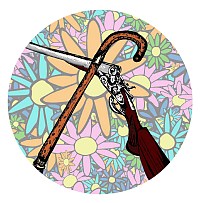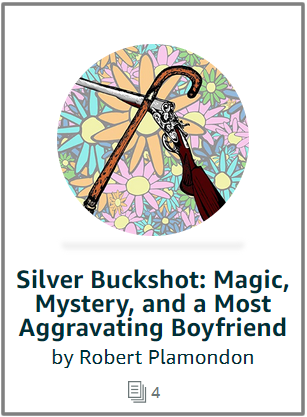Hey, let’s kick around so-called “Deep POV” for a while. It’s fun! Beating it up is almost too easy, but let’s do it anyway.
The idea of “deep POV” is that if you take a stream-of-consciousness narrative and clean it up so it isn’t too unbearable, you’ve got something uniquely wonderful. (People usually define it differently, but then, they would.)
Now, with stream-of-consciousness, you have an inherently shallow point of view, reporting on the viewpoint character’s surface thoughts and immediate impressions as if you were a brain recorder. Nothing deep about it.
Deep POV is exactly the same thing, but while stream-of-consciousness tends to use lots of self-interruption and sentence fragments to maximize its own tedium in the cause of “realism,” deep POV tends to use complete sentences to make the story marginally less ghastly.
Part of the problem with deep POV is that it assumes that the inside of the viewpoint character’s skull is far more interesting than it really is. Let’s face it: it’s dark and wet in there.
This error is compounded by deciding that only the stuff the character is experiencing in the moment can be described at all. All the things that the character knows but isn’t actively thinking about are kept secret from the reader. Thus, if you want to give some background information, you either have to contrive a scene where somebody talks about it or force the character to ponder it, hopefully in a non-random-seeming way.
In an ordinary story, the narration is done by the narrator. Take a traditional first-person story. The author pretends that the viewpoint character first lives through his adventure, then sits down and tells his story as best he can. Narrating his own story, in other words. This lets the author tell the story in a straightforward way, explaining things the audience needs to know as needed. You know: the way human beings tell stories. This isn’t allowed in deep POV. Strangling the narrator is the defining feature of deep POV.
Why would anyone bother? Admit it: you’d rather gnaw off your own leg than read a stream-of-consciousness novel. You’ll never read one unless you sign up for the wrong English class. Thus, the popularity of deep POV is a mystery to me. I assume that it’s a literary fad that affects authors rather than readers.
I’ve noticed, though, that a fondness for deep POV occurs side by side with a second literary spasm: the superstition that “an omniscient narrator is ipso facto a head-hopping narrator.” This belief is drilled into the heads of aspiring writers in spite of its obvious silliness. Omniscient narration is a narrative form; head-hopping is a beginner’s blunder. It’s equivalent to defining a manual transmission as “stalling the car by letting the clutch out too fast.” Nope. Not even close.
What is my favorite narrative form, you ask? It’s the first-person yarn. For example, Robert A. Heinlein starts his classic Have Space Suit, Will Travel with the paragraph
You see, I had this space suit. How it happened was this way:
From the very first line, we know that the story will be told as a personal anecdote, entirely different from the brain-recorder approach that deep POV uses.
In one of the novels I’m writing at the moment, Jen Meets Her Match, Jen makes it clear from the first paragraph that she sat herself down after the fact and told her story in her own words (and with no attempt to restrain her teenaged attitude):
My boyfriend is a real piece of work. Oh, I’m sure you’ve heard of girls whose boyfriends are vampires, werewolves, or even zombies. Those girls are lightweights. I don’t mean to brag, but they wouldn’t last five minutes with my boyfriend. Not that Frank is undead or anything. That would be too easy.
This entire paragraph would be impossible in deep POV, since it frames action that hasn’t been related yet, and that’s verboten. Nor would the next paragraph be permissible in deep POV:
It all started during the first week of school. Sophomore year. Wednesday, September 4, 1974. Paul Anka’s “Having My Baby” was at the top of the charts, but other than that I was doing okay. I was minding my own business when Frank showed up next to me in the lunch line. He was new and we’d never spoken, but we had a few classes together and I knew his name.
Only the sentence “I was minding my own business when Frank showed up next to me in the lunch line” would be allowed in deep POV, since Jen isn’t consciously pondering the date, the Top Forty, or the list of things she knows about Frank during that particular moment. In short, in deep POV, there’s no framing, no scene-setting, no nothin’.
As you can see, I use first-person narration when I want to take full advantage of the viewpoint character’s voice and attitude. I only use it for highly articulate characters. With characters who aren’t as verbally flexible, I use third-person. That way, I’m limited only by my own verbal ability. While there are exceptions where a not-so-articulate character can be a fascinating first-person narrator (Flowers for Algernon leaps to mind), it’s an awfully tough row to hoe.
Does deep POV have any advantages? I haven’t found one: everything claimed as a unique advantage of deep POV is something I’ve been able to do with other viewpoints.




 Lots of great talkers are terrible writers. Put a pen in their hand and they become dull and inarticulate. Why is that?
Lots of great talkers are terrible writers. Put a pen in their hand and they become dull and inarticulate. Why is that? It’s the same with writing. In school, we’re taught a cumbersome approach that cuts us off from our existing skills as completely as the guillotine cut off Marie Antoinette’s head. That isn’t a good look!
It’s the same with writing. In school, we’re taught a cumbersome approach that cuts us off from our existing skills as completely as the guillotine cut off Marie Antoinette’s head. That isn’t a good look! The trend in writing over the past hundred years or so has been informality. These days, professional writing (and especially fiction) has its tie missing and its sleeves rolled up. It’s been a long time since the button-down look has been fashionable.
The trend in writing over the past hundred years or so has been informality. These days, professional writing (and especially fiction) has its tie missing and its sleeves rolled up. It’s been a long time since the button-down look has been fashionable. Terrible first drafts are normal, even for the most successful authors. Don’t despair because your work isn’t as good as theirs, because neither is theirs.
Terrible first drafts are normal, even for the most successful authors. Don’t despair because your work isn’t as good as theirs, because neither is theirs. People who should be writing spend too much time preparing to write. Don’t do that.
People who should be writing spend too much time preparing to write. Don’t do that. Here are some questions and answers to get you started, though:
Here are some questions and answers to get you started, though: